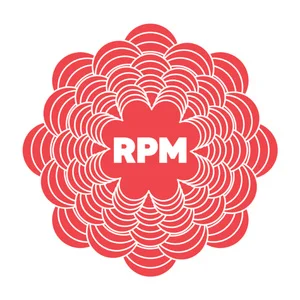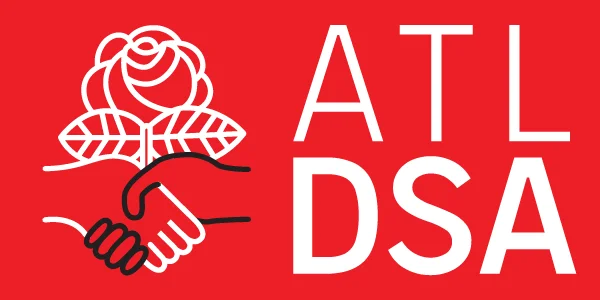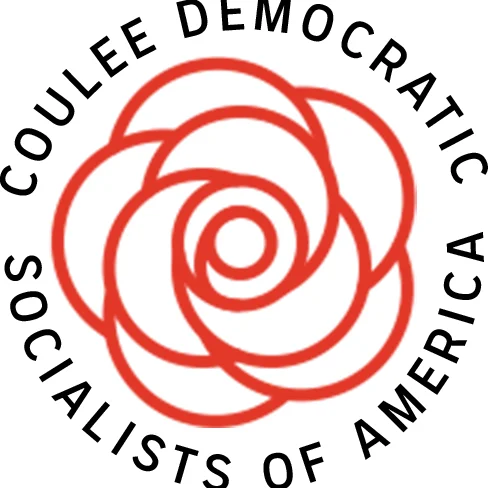

The Terror of Empire


City Council Betrays Working People to Build Cop City
Today, the Atlanta City Council showed its true colors, choosing to ignore vocal opposition by thousands of working-class residents in favor of Atlanta’s corporate elite on the board of the Atlanta Police Foundation. Despite over 16 hours of public comment with 70% of resident callers against the proposal, and despite a survey showing that 98% of Atlanta residents oppose building Cop City, the following Council-members have voted to put profits over people, clear-cut Atlanta’s historic forest, and build an 85 acre, $90 million Cop City: Joyce Sheperd, Andre Dickens, Cleta Winslow, Dustin Hillis, Matt Westmoreland, Michael Julian Bond, Andrea L. Boone, Howard Shook, Marci Overstreet, J.P. Matzigkeit.

Over the last three months, Atlanta DSA has organized weekly canvasses in neighborhoods most directly impacted by the proposed facility, speaking with residents in Atlanta City Council’s 5th and 12th districts and in Dekalb County’s Gresham Park. Despite attempts by City Council, APF, and the corporate media to manufacture consent for the proposal, our outreach affirmed that the community overwhelmingly opposes the development, with over 1,000 residents signing our petition to Stop Cop City. While City Council actively obstructed all meaningful opportunities for public input, we organized a truly democratic People’s Town Hall attended by over 100 residents who came to express their stance against Cop City. The message from working-class Atlanta is loud and clear: Stop Cop City.
Yet despite the clear public opposition from Atlanta’s working class, despite the rallying cries from the public over the last year to defund the police state, despite the human and environmental harms that will result from deforestation as we face the threat of climate change, this City Council once again sided with corporate Atlanta over their own constituents.
If anything, this vote has reinforced that as long as we live under capitalism, and corporate “philanthropists” maintain their grip over City policy and priorities, the same neoliberal villains that brought us Cop City will continue to bring us dystopian proposals until the working class stands together and organizes for real change.
Despite the disappointing vote, the Atlanta Democratic Socialists of America will continue to organize working class people in the struggle against the billionaire elite. We will continue to organize to abolish policing and mass incarceration. We will continue organizing towards universal housing, healthcare, food for all, and a Green New Deal. The campaign to Stop Cop City has only strengthened and emboldened the working class as a serious political force in Atlanta. If anything, this campaign has confirmed that we can build mass movements to take back power from the corporate elite. We can build a society that invests in communities over the carceral state. It’s more clear now than ever that when ordinary working people come together, we can wield our collective power through organization.
We invite you all to join us in these future struggles towards liberation. To learn more about this campaign and our future work, tune in next Wednesday, September 15th at 7pm, for an online debrief call as we review all we’ve learned and accomplished over these last months, and analyze the final vote and what it means for November’s elections. As always, we invite those committed to joining our future fights to organize in solidarity with us and join DSA.


Stronger Together: RPM Crew Social and Fundraiser!
It’s a Revolutions per Minute social and fundraising extravaganza! Tonight we’re taking a break from our usual format to share a peek behind the scenes of the Revolutions per Minute collective: who we are, why we organize community radio for NYC-DSA, and why we support WBAI 99.5FM. Hear from our RPM hosts, producers, and behind the scenes comrades during this relaxed, casual show that emphasizes the importance of movement-based community media.
Please consider giving to WBAI in the name of Revolutions per Minute. Monthly donations of any amount are appreciated, and giving $25 in a calendar year makes you a voting member of the station! To donate, visit give2wbai.org. We have more cool rewards coming, so keep listening and check back!
To pitch a story for coverage on Revolutions per Minute, visit bit.ly/pitch2RPM.
If you’re a member of NYC-DSA looking to learn more or get involved with making RPM, please visit bit.ly/RPMJoinForm.
This episode was recorded remotely during a night of heavy rain and catastrophic flooding in New York City. We urge you to join NYC-DSA's Ecosocialist Working Group or another local formation and get involved with the struggle to protect workers and tenants against climate catastrophe.


Green New Deal for Public Schools
This summer the IPCC released another devastating report on the climate crisis driven by fossil fuel capital, as like most of the country, we saw the impacts of climate change right here in NYC with heat waves and record rain. Tonight we’ll talk with Ecosocialist comrades Brittany Allen and Gustavo Gordillo about how DSA is taking the climate fight to one of the most essential yet resource deprived institutions across the country - our schools- with the Green New Deal for Public Schools campaign.
To join the national campaign for a Green New Deal for Public Schools: https://greennewschools.com/join
To join NYC-DSA Ecoscialists: https://ecosocialists.nyc/join-us/
Follow NYC-DSA EcoSocialist Working Group on Twitter: @NYCDSA_Ecosoc
Follow NYC-DSA EcoSocialist Working Group on Twitter: @NYCDSA_Ecosoc


The Right to Stay Home with Jabari Brisport
Even with Cuomo out of office, our state still faces a housing crisis. This week, The Supreme Court has issued a temporary injunction against the "Emergency Eviction and Foreclosure Prevention Act," also known as the New York State's Eviction moratorium. This immediately suspends the eviction protections for tenants included in that law. Up to 40 million Americans could face eviction due to the ending of the eviction moratorium. For some, it's fifteen months worth of back rent- and in more expensive cities like NYC or Portland where rents have skyrocketed after the 2008 mortgage crisis, that can mean up to $31,500 - due immediately.
As the Delta variant surges with 619,000 deaths in the last 30 days and hospitals filled to breaking point from Florida to Texas (including 90,000 hospitalized children in the last week alone), the pandemic is certainly not over. And with only 71% of adults vaccinated and children under 12 ineligible for a vaccine, it won’t be ending any time soon either.
Tonight, we hear from State Senator and NYC-DSA member Jabari Brisport about the plans from the DSA Socialists in Office in New York State's legislature to fight for housing as a human right - and the right for all of us to stay at home during COVID 19.
Here are resources via the Met Council on Housing on what to do if you are facing eviction:
DO NOT SELF-EVICT! DO NOT MOVE OUT! It is extremely important to remember that evictions proceedings are long and there are other anti-eviction laws in place.
How can you protect yourself now?
1) Apply for the Emergency Rental Assistance Program (ERAP): If you apply for this program, your landlord cannot move forward with your eviction. This is the strongest protection we have to keep people in their homes.
2) Sign up for the federal CDC moratorium: The federal government has extended its moratorium to October 1st. It is not as strong as the NY State Eviction Moratorium but if you sign the CDC declaration of hardship, it will provide you with a defense in court if your landlord tries to evict you
3) Join your building’s tenant union, or reach out to CASA, Crown Heights Tenant Union or Met Council on Housing for housing help, resources to start your own tenant union or you can also call 311 for available city resources.
We here at RPM stand in solidarity with tenants across the country.


Sand in the Gears with Julia Salazar
Senator Julia Salazar of NY-18 was elected in 2018 after winning an insurgent, grassroots campaign powered by NYC-DSA as well as many movement allies. Three years later, she’s serving her second term in Albany as the chair of the Women’s Issues Committee and the chair of the Crime Victims, Crime, and Corrections Committee.
On tonight’s show, we speak with Senator Salazar as well as her Organizing Director and fellow NYC-DSA member, Ramon Pebenito. Dismantling the carceral system requires all of us to exercise our power to slow, stop, or mitigate the harms of police and prisons, or to throw “sand in the gears” of the machine of bureaucratic state violence wherever we are. In this episode, we hear from Senator Salazar on her surprise visits to NY State correctional facilities and from Ramon on over-policing in New York’s district 18.
You can find Senator Salazar on Twitter @SalazarSenate or visit her official website:


One Struggle with Joel Brooks and North New Jersey DSA
We may be across a “state” line from each other, but organizers in New York and New Jersey know what unites us is much more than what divides us. On tonight’s show, we’re joined live by our comrades from North New Jersey DSA to discuss their chapter’s organizing to abolish ICE and close immigrant detention facilities, conduct mutual aid and harm reduction work with their communities, and elect socialist and union leader Joel Brooks to City Council in Jersey City.
To learn more about Joel Brooks’ campaign for City Council, visit https://www.joelbrooksforjerseycity.com/ or follow @VoteJoelBrooks.
You can reach out the North New Jersey Mutual Aid Working Group at: nnjmutualaidwg@gmail.com or contribute to their fundraiser for the Ramapough Lunaape Turtle Clan’s Munsee Three Sisters Medicine Farm in Newton, NJ: https://www.gofundme.com/f/RLsolidarity
Click here to learn more about the North New Jersey Immigrant Justice Working Group: https://linktr.ee/ImmigrationNNJ
To learn more about North New Jersey DSA, visit https://north.dsanj.org/ or follow @NorthNJDSA.


Fascists Bound to Lose
“I'm gonna tell all you fascists, you may be surprised/ People all over this world are getting organized”
Legendary folk singer Woody Guthrie wrote those words in 1944 and here in 2021 they ring truer than ever. The far-right is on the rise globally and socialists, communists, feminists, anarchists, and unionists are joining forces to fight back. Join Revolutions per Minute host Amy Wilson for an hour of antifascist story and song, featuring recordings from the DSA National Antifascist Working Group introductory call on July 11. We’ll hear from DSA members from Long Island, Chicago, Kansas City, Houston, and Portland on what they’ve done to build antifascist response in their community and the lessons they’ve learned. We also hear classic antifascist folk songs recorded specially for Revolutions per Minute.
To learn more about the DSA National Antifascist Working Group, please visit https://www.dsausa.org/working-groups/anti-fascist-working-group/ or follow @DSAAntifascist on Twitter.
Special credits for this episode go to Rob G for audio production, SAREEN for audio composition, and Dan Wyman of Sing in Solidarity, NYC-DSA’s music working group, for musical performance. We send our thanks as well to comrades who participated in this episode who would prefer to stay anonymous, and all those organizing to oppose the rise of fascism where they are.


Coulee DSA Potluck 7/25
Coulee DSA cares about creating a connection amongst our members, where we can form bonds that uplift one another, and our greater community. And there is no better way to build connections than spending time with one another!

Come join Coulee DSA for a late afternoon potluck at Chad Erickson Park, Sunday July 25th at 4 PM! (Facebook event here) It’s been a long year, and we hope that relaxed time together outside and with a good meal will help us connect!
CDSA will be providing the main course (vegetarian options also available) and we’d love for members and friends to bring sides, sweet treats, and drinks to share, as they are able.
If you have questions about the event, or upcoming socials and service activities through Coulee DSA, e-mail couleedsa@gmail.com
The post Coulee DSA Potluck 7/25 first appeared on Coulee DSA.


Rust Belt Socialism on the Rise
On June 22, the name India Walton skyrocketed into the mainstream after the DSA-endorsed candidate won the democratic primary for the Mayor of Buffalo. Walton was endorsed by Buffalo DSA and National DSA, as well as the DSA slate in Albany. When elected in November she will be the first socialist Mayor of a large city since 1960, but she joins a number of socialist, like Pennsylvania Representative Summer Lee, who are winning elections in the rust belt. Today we'll be joined by Steven Jackson from Buffalo DSA to talk about India Walton’s incredible victory and the rise of socialism in the rust belt.
Follow Buffalo DSA on Twitter at @BuffaloDSA and on Instagram and Facebook
Visit www.IndiaWalton.com to support India's campaign
Join the Gas Bill Strike against National Grid's North Brooklyn Pipeline at www.nonbkpipeline.org/strike